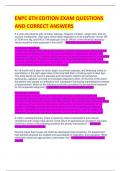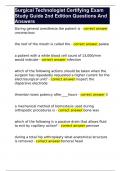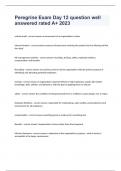Examen
ENPC 6TH EDITION EXAM QUESTIONS AND CORRECT ANSWERS
ENPC 6TH EDITION EXAM QUESTIONS AND CORRECT ANSWERS A 4-year-old presents with vomiting, lethargy, frequent urination, weight loss, and dry mucous membranes. Vital signs reveal deep respirations at 44 breaths per minute, BP of 70/44 mm Hg, and HR of 144 beats per minute. Which of the followi...
[Montrer plus]












